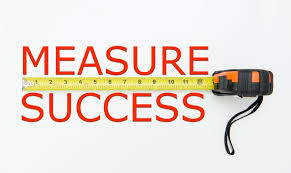
Critical numbers and the mere mention of them make some business operators feel squeamish because of an unjustified fear of what they consider to be unknown territory. Identifying such vital statistics, interpreting the information and applying the knowledge, as well as regularly tracking the figures is not as complex as its sounds.
The practice is essential for survival and success.
A disciplined approach should be adopted so business operators go through the process formally, not just in their minds and have ready access to the statistics.
A business development professional can help those who are nervous when it comes to figures learn how to identify, interpret and track critical numbers, as well as other key performance indicators (KPIs), so they can use the information to the best possible advantage.
A business development professional’s assistance will be invaluable in most cases – so too can that of suppliers of basic accounting software packages in terms of explaining how to read the information that is being generated.
Small and medium business issues specialist, Sue Prestney, says it is important for operators to “own up” to their accountants if they don’t understand so they can learn how to work out ratios and interpret figures.
Once businesses have mastered the key figures, it is simply a matter of checking them off with their business development professional perhaps once a quarter.
“Some small operators say the can’t afford the assistance they need, but they can’t afford to go broke either,” says David Cordy, small business management advisor.
Businesses are very good technically at what they do but if the owner/operator struggles to manage certain areas then they need to seek outside help, Cordy stresses.
Judy Hartcher, a business policy advisor, describes critical numbers and other KPIs, as the pulse of any business because they provide the measures to check the overall health of an operation.
There is a whole raft of KPI’s – financial and non-financial, obvious and hidden – and their relevance is determined largely by the type and size of the business concerned.
There are usually five or six core financial performance measures that should be tracked regularly.
“Some businesses are more focused on ratios and others are keener on sales figures … there is no one perfect way,” says Hartcher.
Asset ratios, debtors days outstanding, creditors days outstanding, stock turnover, cost of goods sold, cash flow/working capital, breakeven points and profitability figures are among those topping the list.
Hidden figures such as the cost of borrowings are also part of the picture.
Cordy strongly advises operations to conduct a regular “waste” audit to keep a check on what “profits are going out the door” because of double handling, carrying too much stock, poor management of staff hours and unnecessary paper flow.
The identification, tracking and use of critical numbers is part of the “balanced scorecard approach” to business, according to Prestney.
In a balanced scorecard approach, businesses focus on the core segments of the operation and determine what it is they want to achieve in each area.
Core segments include financial elements such as critical numbers, people, customers and marketing, and operational and for some, innovation.
Tracking critical numbers helps monitor cash flow, the lifeblood of any operation, as well as profitability.
“Profitable businesses can still go broke,” warns Prestney.
Sue Blatherwick, a senior manager in assurance and business advisory services, noted the importance of tracking the level of debt to which smaller businesses are particularly vulnerable.
“Businesses need to regularly check that their debtors are paying quickly enough for the business to pay its own creditors,” Blatherwick says.
Another area stressed by Hartcher is the importance of understanding the relationship between gross profit (the difference between sales and the cost of sales) and prices.
Many businesses do not understand that lower prices and increased sales do not guarantee greater profits.
For example, says Hartcher, if a business has a gross profit of 10 percent and it reduces its prices by 2 percent, the volume of sales will have to be increased by 25 percent in order to maintain the same level of gross profit.
Copyright 2002, RAN ONE Inc. All rights reserved. Reprinted with permission from www.ranone.com.

 Chris’ combination of academic credentials, career experience and temperament ideally suit his calling as a business development advisor. Clients say he has a mind for business and a heart for service.
Chris’ combination of academic credentials, career experience and temperament ideally suit his calling as a business development advisor. Clients say he has a mind for business and a heart for service.